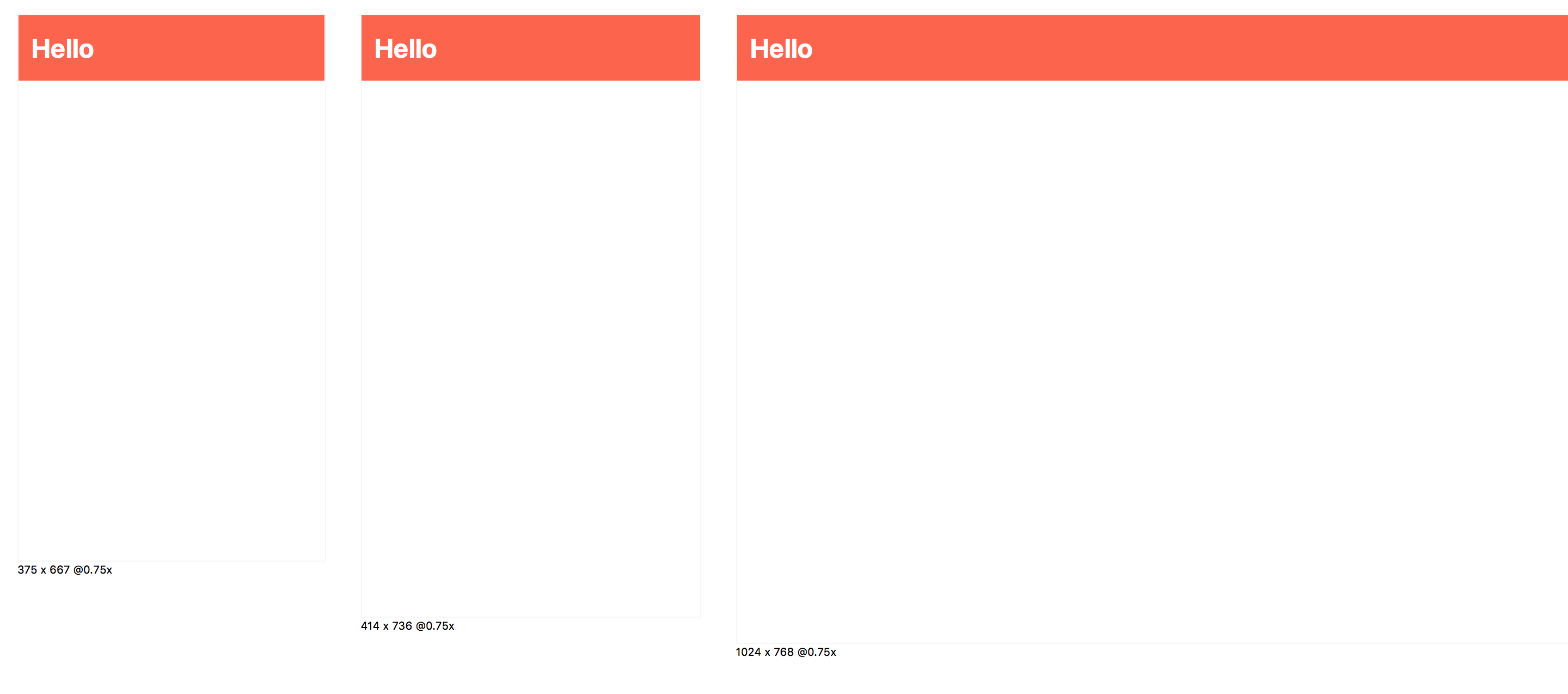Tools for developing, documenting, and testing React component libraries
- Zero-config development server
- Component library mode
- Utility components for demos and development
- Reuse component examples for development, documentation, and testing
- Read more about Kit on our blog
Install the Kit CLI to get started with isolated component development.
npm i -g @compositor/kit-cliCreate an examples folder for your components.
This folder can be used for development, documentation, and testing purposes.
An example file should export a single default component for rendering.
// Button.js example
import React from 'react'
import { Button } from '../src'
export default props =>
<Button>Button</Button>Be sure to install any local dependencies, including react,
and start the development server.
kit examplesThe index will show a list of links to each example. Each example will have its own route where it can be viewed in isolation.
To view all examples in library mode with persistent navigation, use the --mode flag.
kit examples --mode libraryIf you already have an existing development setup, or want to enhance your examples, use the Kit components directly in any React setup.
npm i @compositor/kitUse the Library, Example, and Detail components to create a custom component library view.
import React from 'react'
import { Library, Example } from '@compositor/kit'
import { Button } from '../src'
export default props =>
<Library>
<Example name='Button'>
<Button>Button</Button>
</Example>
</Library>Use the XRay component to outline HTML elements and display a grid to help ensure your UI is visually aligned.
import React from 'react'
import { XRay } from '@compositor/kit'
import { Button } from '../src'
export default props =>
<XRay>
<Button>Button</Button>
</XRay>Use the Cartesian component to render the cartesian product of props.
import React from 'react'
import { Cartesian } from '@compositor/kit'
import Button from '../src/Button'
export default props => (
<Cartesian
component={Button}
m={4}
fontSize={[1, 2, 3]}
bg={['blue', 'pink', 'tomato', 'purple']}
children={['Hello, world!', 'Beep']}
/>
)Use the Responsive component to render components in multiple iframes at different viewport sizes.
import React from 'react'
import { Responsive } from '@compositor/kit'
import PageHeader from '../src/PageHeader'
const example = (
<Responsive>
<PageHeader />
</Responsive>
)See the Kit components package for more components.
Use the kit init command to create a new project based on a growing set of templates.
- kit-snapshot: run Jest snapshot tests for example components
- Fork it
- Create your feature branch (
git checkout -b my-new-feature) - Commit your changes (
git commit -am 'Add some feature') - Push to the branch (
git push origin my-new-feature) - Create new Pull Request





